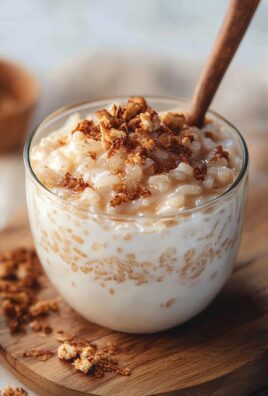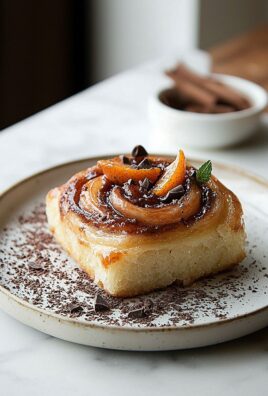Feta Cheesecake might just be the revelation your tastebuds have been waiting for. Forget everything you thought you knew about cheesecake, because this isn’t your average dessert. We’re diving headfirst into a world where the tangy, salty brilliance of feta cheese dances with creamy sweetness, creating a flavor profile that’s utterly addictive. People are falling in love with this Feta Cheesecake for its unexpected yet harmonious blend of savory and sweet. It’s that intriguing contrast, the way the sharp feta cuts through the rich custard, that makes it so incredibly special. Imagine a perfectly baked crust, a luscious, creamy filling infused with the distinct character of feta, and perhaps a drizzle of honey or a scattering of fresh herbs. It’s sophisticated, it’s surprising, and it’s undeniably delicious. Get ready to impress yourself and everyone you share it with!
Ingredients:
- 1 ½ cups graham cracker crumbs
- ½ cup melted butter
- 16 oz cream cheese, softened
- 8 oz feta cheese, crumbled
- ½ cup sour cream
- 3 eggs
- 2 tbsp honey
- 1 tsp lemon zest
- 1 tbsp fresh thyme, chopped
- Salt & pepper to taste
Preparing the Crust
The foundation of our Feta Cheesecake is a classic graham cracker crust, with a savory twist. In a medium bowl, combine the 1 ½ cups of graham cracker crumbs with the ½ cup of melted butter. Stir until the crumbs are thoroughly moistened, resembling wet sand. This ensures the crust will hold together beautifully after baking. For an extra layer of flavor, you could add a pinch of salt and a tiny bit of sugar to the crumbs before adding the butter, though the feta’s saltiness makes this optional.
Now, it’s time to press the mixture into your prepared cheesecake pan. I prefer using a springform pan, typically 9-inches, as it makes removal a breeze. Press the graham cracker mixture evenly and firmly into the bottom of the pan. You can use the flat bottom of a measuring cup or glass to get a nice, compact and even layer. Make sure to push it slightly up the sides of the pan if you desire a slightly more pronounced crust edge. Once pressed, place the pan in the freezer for at least 10 minutes while you prepare the filling. This chilling step helps the crust firm up, preventing it from becoming soggy.
Crafting the Feta Cheesecake Filling
This is where our star ingredient, feta, truly shines. In a large mixing bowl, start by creaming together the 16 oz of softened cream cheese and the 8 oz of crumbled feta cheese. It’s crucial that the cream cheese is truly softened to room temperature; this will make it much easier to achieve a smooth, lump-free filling. Use an electric mixer on medium speed to beat these two cheeses until they are light, fluffy, and well combined. Don’t rush this step; a smooth base is key to a perfect cheesecake texture.
Next, incorporate the ½ cup of sour cream into the cream cheese and feta mixture. Sour cream adds a wonderful tang and richness, complementing the saltiness of the feta beautifully. Beat until just combined. Now, it’s time to add the eggs, one at a time, beating on low speed after each addition until just incorporated. Overmixing at this stage can introduce too much air, potentially leading to cracks in your cheesecake as it bakes. Scrape down the sides of the bowl as needed to ensure everything is evenly mixed.
To add subtle sweetness and aromatic complexity, stir in the 2 tbsp of honey, 1 tsp of lemon zest, and 1 tbsp of chopped fresh thyme. The honey will provide a gentle sweetness that balances the savory elements, while the lemon zest adds a bright, fresh note that cuts through the richness. Fresh thyme brings an earthy, slightly floral aroma that pairs exceptionally well with feta. Finally, season the filling with a pinch of salt and a grind of black pepper to taste. Remember that feta is already salty, so taste carefully before adding too much salt.
Baking the Feta Cheesecake
Now that our Feta Cheesecake filling is ready, it’s time to bake. Carefully pour the filling into the prepared crust, spreading it evenly with a spatula. For a crack-free cheesecake, a water bath is highly recommended. Wrap the bottom of your springform pan securely in heavy-duty aluminum foil to prevent any water from seeping in. Place the foil-wrapped pan into a larger roasting pan. Carefully pour hot water into the roasting pan, ensuring the water comes about halfway up the sides of the springform pan. This creates a humid environment that promotes even baking and prevents the edges from over-browning.
Preheat your oven to 325°F (160°C). Gently place the roasting pan with the cheesecake and water bath into the preheated oven. Bake for approximately 50-60 minutes, or until the edges of the cheesecake are set and the center is still slightly jiggly when you gently shake the pan. It’s better to underbake slightly than overbake, as the cheesecake will continue to set as it cools.
Cooling and Chilling
Once baked, turn off the oven and crack the oven door open slightly. Leave the Feta Cheesecake in the oven for another hour. This gradual cooling process is essential for preventing cracks. After that hour, carefully remove the cheesecake from the water bath and let it cool completely on a wire rack at room temperature. Once fully cooled, cover the cheesecake loosely with plastic wrap and refrigerate for at least 4-6 hours, or preferably overnight. This chilling period is crucial for allowing the flavors to meld and for the cheesecake to firm up to its perfect texture.
When you’re ready to serve, carefully run a thin knife around the edge of the pan before releasing the springform. Slice with a sharp knife, wiping the blade clean between each cut for neat portions. Garnish with a few extra fresh thyme sprigs or a drizzle of honey, if desired. Enjoy this uniquely savory and incredibly delicious Feta Cheesecake!

Conclusion:
And there you have it – a truly divine Feta Cheesecake that’s bound to impress! We’ve explored how to achieve that perfect creamy texture and a delightful salty-sweet balance, making this recipe a standout. This Feta Cheesecake is incredibly versatile, moving effortlessly from a sophisticated appetizer to a unique dessert. For serving, consider pairing it with a drizzle of honey or balsamic glaze, fresh berries, or even toasted nuts for added texture and flavor. If you’re feeling adventurous, try incorporating fresh herbs like dill or chives into the batter for an extra layer of complexity. Don’t be afraid to experiment! This recipe is designed to be a canvas for your creativity. So, gather your ingredients, embrace the process, and enjoy creating this memorable Feta Cheesecake for yourself and your loved ones. I hope you find as much joy in making and sharing it as I do!
Frequently Asked Questions:
Can I make this Feta Cheesecake ahead of time?
Absolutely! Feta Cheesecake is an excellent make-ahead option. It’s best to bake it and let it cool completely before covering it tightly and refrigerating for at least 4 hours, or ideally overnight. This allows the flavors to meld beautifully and the cheesecake to set fully, ensuring a perfect slice every time.
What if I don’t like feta cheese?
While the feta is the star of this particular cheesecake, you could adapt the concept to other savory cheeses. A goat cheese cheesecake would be a delicious alternative, offering a similar tang but a slightly different flavor profile. You might need to adjust the saltiness based on the cheese you choose.

Savory Feta Cheesecake- A Tangy Delight
A unique and delicious cheesecake featuring the tangy flavor of feta cheese, complemented by honey, lemon zest, and fresh thyme.
Ingredients
-
1 ½ cups graham cracker crumbs
-
½ cup melted butter
-
16 oz cream cheese, softened
-
8 oz feta cheese, crumbled
-
½ cup sour cream
-
3 eggs
-
2 tbsp honey
-
1 tsp lemon zest
-
1 tbsp fresh thyme, chopped
-
Salt & pepper to taste
Instructions
-
Step 1
Prepare the crust: Combine graham cracker crumbs and melted butter. Press evenly into a springform pan and freeze for at least 10 minutes. -
Step 2
Make the filling: Cream together softened cream cheese and crumbled feta until smooth. Beat in sour cream until just combined. -
Step 3
Add eggs one at a time, beating on low speed after each addition. Stir in honey, lemon zest, and chopped thyme. Season with salt and pepper to taste, being mindful of feta’s saltiness. -
Step 4
Bake the cheesecake: Pour filling into the crust. Wrap the springform pan in foil and place in a roasting pan. Add hot water to the roasting pan for a water bath. Bake at 325°F (160°C) for 50-60 minutes, or until edges are set and center is slightly jiggly. -
Step 5
Cool and chill: Turn off the oven, crack the door open, and leave the cheesecake inside for an hour. Remove from water bath and let cool completely at room temperature. Refrigerate for at least 4-6 hours, or overnight.
Important Information
Nutrition Facts (Per Serving)
It is important to consider this information as approximate and not to use it as definitive health advice.
Allergy Information
Please check ingredients for potential allergens and consult a health professional if in doubt.




Leave a Comment